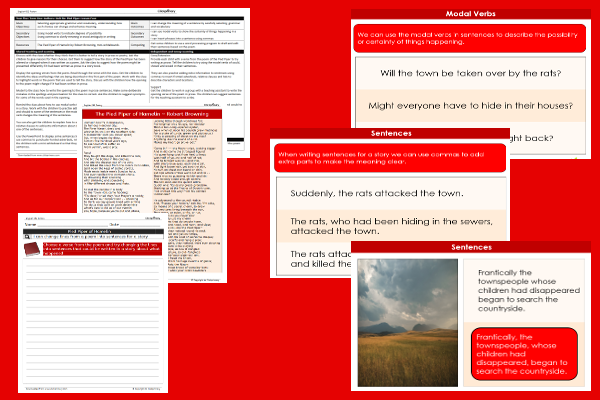Lesson Four – Poetry Prose

This English teaching pack for Key Stage Two gets the children to explain and model how to convert a verse from a narrative poem into written prose that could feature in a fictional story about what happened in the sequence of events.
The class can practise using commas to insert phrases and clauses into their sentences to extend their written descriptions of characters and settings.
Download this teaching pack including a lesson plan, classroom activities and an interactive presentation to explain and model how to convert a verse from a narrative poem into written prose that could feature in a fictional story about what happened in the sequence of events
Activities in this teaching pack include a shared reading text to identify and describe the structure and format of a narrative poem by a significant author and a template to convert a verse from a narrative poem into written prose that could feature in a fictional story.
The interactive presentation gets the children to explore how to how to convert a verse from a narrative poem into written prose that could feature in a fictional story.
This lesson is part of an English scheme of work to get the children to investigate the language style and structure of a narrative poem to retell the story using prose and other poetry styles, practise adding prefixes to roots using hyphens and use modal verbs to change poetry lines. There are teaching activities for shared learning, differentiated worksheets to support independent learning and interactive presentations to introduce concepts and key skills.
-

Determinant Lists
Explain and model how to make lists of objects used and found in different locations to match the correct determinants of a and an
-

English SPAG Assessment
Assess abilities in composing sentences for fiction and non-fiction using the correct spellings, punctuation marks and grammar vocabulary phrases
-

Maths Arithmetic Assessment
Assess abilities in solving arithmetic number problems for addition, subtraction, multiplication and division when working with informal and formal written calculations
-

Environment
Identify and describe some of the special landscapes and locations that can be found in the world and reflect on how they can be protected and preserved for the future
